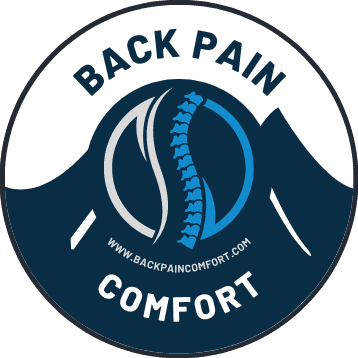
Back pain is a common complaint among office workers, often attributed to the many hours spent in a stationary position. With the majority of the workforce spending upwards of eight hours a day at a desk, it’s no surprise that spinal and muscular discomfort are frequent issues. However, much of this pain is preventable with the right ergonomic setup. In this blog post, we’ll explore several ergonomic solutions that can help alleviate and prevent back pain, ensuring your workday is both productive and comfortable. From choosing the right chair to organizing your desk and positioning your monitor correctly, these tips will help you create a back-friendly workspace.
Understanding Back Pain at Work
Back pain at the workplace is primarily caused by prolonged periods of sitting, which can lead to poor posture and unnecessary strain on the spinal column. This issue is exacerbated by office furniture and setups that do not support the natural curve of the spine. Common culprits include chairs with inadequate lumbar support, desks at improper heights, and computer screens positioned too high or too low. Understanding the ergonomic risks associated with these factors is the first step towards mitigating them.
The human back is a complex structure composed of bones, joints, muscles, and ligaments, all of which can be affected by your work environment. When your workspace is not set up correctly, it can lead to misalignment of the spine, increased tension in the neck and shoulders, and ultimately, significant discomfort or pain. By adopting ergonomic principles, you can enhance your work setup to support the natural posture of your body, thereby reducing the risk of developing chronic back issues.
Key Ergonomic Solutions for Back Pain
Ergonomic Chair Features: An ergonomic chair is crucial for maintaining good posture and supporting the lumbar region of the spine. When selecting an office chair, look for one with adjustable features. The ability to adjust the height ensures that your feet can rest flat on the floor, while an adjustable backrest allows you to align the chair’s lumbar support with the curve of your lower back. Chairs that offer tilt functions can help maintain movement in your lower back, reducing stiffness and pain.

Desk Setup and Organization: The height and organization of your desk play a pivotal role in maintaining good posture. Your desk should be at a height that allows your elbows to form a 90-degree angle when typing. This setup helps keep your wrists straight and your shoulders relaxed, minimizing strain. Ensure that there is enough space under your desk to move your legs freely, which can help improve circulation and reduce fatigue.
Monitor and Keyboard Placement: The position of your monitor and keyboard is critical in preventing neck and back strain. Your computer screen should be at eye level so that you can look straight ahead without tilting your head up or down. If necessary, use a monitor stand or adjust the monitor’s built-in settings to achieve the correct height. The screen should also be about an arm’s length away, with the top of the monitor slightly below eye level.
The Role of Standing Desks: Integrating a standing desk into your office setup is another effective way to combat the adverse effects of prolonged sitting. Standing desks encourage movement and allow you to alternate between sitting and standing throughout the day. This variation in posture helps to engage different muscle groups and stimulates better blood circulation, significantly reducing the risk of back pain. When using a standing desk, ensure that your computer monitor and keyboard are adjusted to maintain optimal posture, with the monitor at eye level and the keyboard positioned so your wrists remain flat.
Footrests, Wrist Rests, and Other Accessories: Small ergonomic accessories can also make a significant impact on your comfort and spinal health. A footrest can help maintain the knees at an appropriate angle, aligning your posture and reducing pressure on your lower back. Similarly, wrist rests support your wrists while typing or using a mouse, which helps prevent the development of repetitive strain injuries and carpal tunnel syndrome. These tools are especially useful if your existing furniture doesn’t offer enough support or adjustability.
Incorporating Movement and Breaks
Regular movement is critical in preventing back pain and other musculoskeletal disorders. Aim to take short breaks every 30 to 60 minutes to stretch and move around. Simple stretches that target the back, shoulders, and neck can be done right at your desk. Additionally, walking or doing a few standing stretches during these breaks can invigorate your body and increase productivity. Encouraging a routine of movement helps to keep muscles active and prevent the stiffness associated with long periods of sitting.

Creating a Holistic Ergonomic Environment
Beyond individual ergonomic tools and behaviors, creating a supportive work environment is equally important. Good natural lighting reduces eye strain and headaches, while a well-organized and aesthetically pleasing office can boost morale and reduce stress. Promote a culture of health and wellness in your workplace by encouraging coworkers to adopt ergonomic practices and to look out for each other’s physical well-being.
Conclusion
Back pain at work is a preventable condition that can be significantly alleviated with the right ergonomic adjustments. By choosing the proper chair, setting up your desk correctly, using a standing desk, and incorporating supportive accessories, you can create a workspace that fosters health and productivity. Remember, the key to maintaining back health is not only in setting up your environment but also in incorporating regular movement and mindfulness into your workday. Assess your workspace today, make necessary adjustments, and enjoy a more comfortable and pain-free work life.






